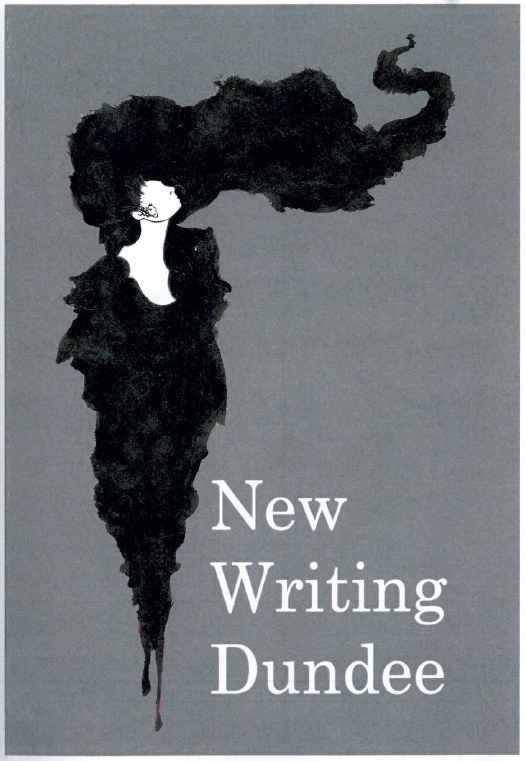Dundee’s primary creative writing showcase confirms that there is talent worth championing in the area. Obligatory hat-tipping perhaps denies the spotlight to some of our most raw ‘new’ writers, but the collection proves good value in its length and breadth of subjects.
One of Dundee’s greatest strengths has always been the inquisitive and literate nature of its population. When considered with the area’s background in journalism and academic writing, it is a mystery why there is not a greater literary presence in the city.
There have been a few successful magazine ventures with a whiff of the east coast about them Clash comes to mind but there are no traditional, independent book publishers and not much in the way of a support network for aspiring writers. They opt to tout their work to Fife or Edinburgh, a real shame.
It was because of this that I welcomed New Writing Dundee’s first release several years ago. It has proved an invaluable outlet for a few Dundonians, a number of Scots and many international pen friends.
Previous editions have had their faults, but after an initial leaf through, I felt excitement about NWD 5, the latest release under the Literary Dundee banner and published by Discovery Press.
The book is large and full of stories and poems which would fit into better established, perhaps more self-important, collections. I’m happy to say that a large number of these same works are by writers from not too far away, whose work I had no idea about.
I was enthused by Leaving The Emerald City, a Paul McFadyen poem that takes a George Herbert-like goblet shape and slams it upside down it to fantastic, bombastic effect.
Digs, a prose poem by west coaster Gavin Marshall, shows real depth as a study of how the Scottish working-class father/son relationship buckled because of universal education. Wonderberries, by Dundonian Lorraine McCann, has excellent pace and is to the point.
There’s an evenness of tone and economy, from which the anthology benefits. Keeping The Faithful by James Stewart is a very promising cyber-clergy story, which is as confusing as that description sounds. It does get bogged down in honorific titles but it is a worthy read that put me in mind of the Philip Dick novel Flow My Tears, The Policeman Said.
Belica Kubareli’s Contagious Diseases is a well-crafted bit of romantic literature, one of NWD’s best international selections and a good counter-argument to confining these sorts of journals to one area. Similarly, Sunburst Finish by Andy Jackson (an ex-Mancunian in Scotland) is the sort of vibrant poetry I’d expect from a young publication.
Vincent O’Sullivan has three poems to begin with, perhaps an early tug of the forelock, but the inclusion of Convent Girl In The Wairarapa paired with NWD 5’s large size make this forgiveable. I found The Mute Saint a quirky tale about an idiot savant, which Gordon Darroch has clearly enjoyed writing in the Palahniuk mould.
The Cat, a poem by English academic Christopher Reid, sits well beside Dundee University lecturer Jim Stewart’s Earwigs, and the two are NWD 5’s best poems. Reid’s cat words are rascal and filled with poise, while Stewart’s are dark, doggerel and spiny.
I enjoyed reading a large percentage of the work on show, but my honourable mentions go to local workshop alumna Jane O’Neill, Dundee teacher Jane Christie, and lecturer Nicole Devarenne. Linda Menzies’ story (NWD 5’s sole dialect inclusion) is pithy and it is heartening to see Scots fiction steered so firmly away from the kailyard.
An interview with Scotsman books editor David Robinson is a loving reflection on the journalistic standards of Capote, Hemingway and Orwell. It seems a strange addition to a book of short stories and poems, but its relevance ties in with with part of Dundee’s background. Robert Crawford ends the book with an elegant set of couplets, reinforcing my belief that he is one of Scotland’s living literary gems.
There is a fair amount of editorial self-selection to be found, although I found this to be a great fault in only two instances. It is one of the white elephants in the anthology world, but it is true that the best writers are often found on a journal’s editorial staff. This is evident in several cases here.
Other selections are a little academic and middle class for my taste, although there is something to be said for a book from Dundee that is not focused on drugs, murder, schemes or gangs.
The quality of writing featured in NWD is improving with every edition, as is the design and overall standard. However, in future I would like to see a greater focus on Scottish input and less on a transatlantic connection, the results of which did not add to my enjoyment much.
New Writing Dundee 5 is published by Discovery Press and is now available online here.
